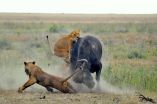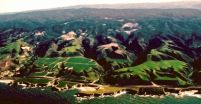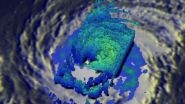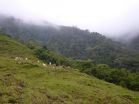Special edition: Science in Iran
2015-09-03
(Press-News.org) This news release is available in Japanese.
A special news edition, Science in Iran, looks closely at the scientific challenges and triumphs of a country that has faced international isolation in recent years. Following an exclusive interview about the Iran nuclear deal with Ali Akbar Salehi, president of the Atomic Energy Organization of Iran, Science International News Editor Richard Stone delves further into the state of Iran's scientific endeavors. Decades of economic sanctions have deprived Iranian scientists of critical scientific resources and collaboration. Despite these crippling limitations from the external world - and funding shortages internally - they have persevered. Whether by generating intellectual ideas or using homespun ingenuity to create their own resources from scratch, Iranian scientists have made remarkable achievements. In light of the Iran deal that would, if implemented, ease international restrictions, this science that has been happening in the dark may soon be accessible to all. In a story rich with previously untold details, Stone provides fascinating insights into the science that has persisted in Iran in lieu of the sanctions, and the exciting potential of what's to come in a more reciprocal environment.
In a second story, Stone takes readers through Iran's long process to reclaim some of its past astronomical glory, in the form of the Iranian National Observatory (INO), a world-class optical telescope with a 3.4 meter (11-foot) mirror. The concept for the observatory began in the 1980s - but war, political turmoil and limited funds have taken turns interfering with the construction. But it seems the stars are finally aligning for the INO, which is now slated for construction in the spring of 2016. Soon, the INO could be in use, hunting for dark matter and probing the intricacies of galaxy formation.
A final piece focuses on Iran's dying great salt lake, which is rapidly retreating to expose a salt desert that is generating noxious dust, and threatening crops and people. Much of the Lake Urmia's demise can be attributed to water management, where the three rivers that supply nearly 90% of the water flowing into Urmia have been dammed for irrigation and hydropower. An estimated 40,000 illegal wells around the lake's basin compound the problem. Hoping to save Lake Urmia, the Iranian government has launched its biggest environmental project ever.
This special news package is complemented by an editorial from Mohammad Farhadi, Iran's Minister of Science, highlighting Iran's readiness to grow its international scientific collaborations and embark on a new era of international interaction.
INFORMATION:
Note: This special news package will be available for free when the embargo lifts at http://www.sciencemag.org. END
[Attachments] See images for this press release:
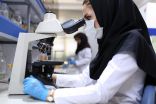
ELSE PRESS RELEASES FROM THIS DATE:
2015-09-03
Biologists at the University of York have taken an important step in making it possible to clean millions of hectares of land contaminated by explosives.
A team from the Centre for Novel Agricultural Products (CNAP) in the University's Department of Biology has unravelled the mechanism of TNT toxicity in plants raising the possibility of a new approach to explosives remediation technology. TNT has become an extensive global pollutant over the last 100 years and there are mounting concerns over its toxicity to biological systems.
The study, which is published in Science, ...
2015-09-03
Researchers at VIB (a leading life sciences institute in Flanders, Belgium) and Ghent University have successfully established a causal relationship between exposure to so-called farm dust and protection against asthma and allergies. This breakthrough discovery is a major step forward towards the development of an asthma vaccine. The results of the research were published in the leading journal Science.
It is commonly known that drinking raw cow's milk can provide protection against allergies. A 14-member research team, led by professors Bart Lambrecht and Hamida Hammad ...
2015-09-03
Evidence from a new study published in PLOS Computational Biology by researchers from Brown University and led by Assistant Professor Thomas Serre suggests that when we analyze scenery we simply make the easiest judgments first, rather than following a priority order of categories.
There are many ways we understand scenery. Is it navigable or obstructed? Natural or man-made? A face or not a face? In previous experiments, researchers have found that some categorization tasks seem special, in that they occur earlier than others, leading to a hypothesis that the brain has ...
2015-09-03
Rodents huddle together when it is cold, they separate when it is warm, and at moderate temperatures they cycle between the warm center and the cold edges of the group. In a new study published in PLOS Computational Biology, Jonathan Glancy, Roderich Gross, Jim Stone and Stuart Wilson from the University of Sheffield found they could simulate huddling by assuming simply that touching individuals in turn brings their temperatures closer to an ideal body temperature. According to the model, these selfish individual behaviours improved the ability of the whole group to regulate ...
2015-09-03
Why aren't there more lions? That was what puzzled McGill PhD student Ian Hatton, when he started looking at the proportion of predators to prey across dozens of parks in East and Southern Africa. In this case, the answer had nothing to do with isolated human hunters. The parks were teeming with potentially tasty treats for the lions. So one might imagine that the population of lions in each park would increase to match the available prey. Instead, what Hatton and the McGill-led team discovered was that, in a very systematic way, in crowded settings, prey reproduced less ...
2015-09-03
CAMBRIDGE, Mass. (September 3, 2015) - A protein known to play a role in transporting the molecular contents of normal cells into and out of various intracellular compartments can also turn such cells cancerous by stimulating a key growth-control pathway.
By conducting a large-scale search for regulators of the signaling pathway known as PI3K/AKT, which promotes cell survival, growth, and proliferation--and which is highly active in cancer cells--researchers at Whitehead Institute and Memorial Sloan-Kettering Cancer Center have implicated the protein RAB35 in the oncogenic ...
2015-09-03
For millions of years, the Pacific and North American plates have been sliding past -- and crashing into -- one another. This ongoing conflict creates uplift, the geological phenomenon that formed mountains along the west coast.
A new analysis by UC Santa Barbara earth scientist Alex Simms demonstrates that the Pacific coastlines of North America are not uplifting as rapidly as previously thought. The results appear in the journal Geological Society of America Bulletin.
"Current models overestimate uplift rates by an average of 40 percent," said Simms, an associate ...
2015-09-03
Hurricane Jimena, a once powerful Category 4 storm with maximum sustained winds estimated at 140 mph by the National Hurricane Center, has continued to weaken well east of Hawaii. The Global Precipitation Measurement or GPM core satellite analyzed rainfall rates and saw the eyewall was eroding.
The eyewall of a hurricane contains a storm's most damaging winds and intense rainfall. It consists of a vertical wall of powerful thunderstorms circling a hurricane's open eye.
GPM is a joint mission between NASA and the Japanese space agency JAXA. GPM captured data on Jimena ...
2015-09-03
The world is facing an extinction crisis as more and more forests are converted into farmland. But does it help when farms share the land with birds and other animals?
The short answer is "no," according to new evidence based on the diversity of bird species reported in the Cell Press journal Current Biology on September 3. If the goal is to preserve more bird species, representing a greater span of evolutionary history, then it's better to farm more intensively in some areas while leaving more blocks of land entirely alone. In other words, land-sparing wins out over ...
2015-09-03
High levels of saturated fat in the blood could make an individual more prone to inflammation and tissue damage, a new study suggests.
Received wisdom on the health risks of eating saturated fat has been called into question recently. This new research supports the view that excessive consumption of saturated fat can be bad for us.
Scientists from Imperial College London studied mice that have an unusually high level of saturated fat circulating in their blood. The research, published today (3 September 2015) in Cell Reports shows that the presence of saturated fats ...
LAST 30 PRESS RELEASES:
[Press-News.org] Special edition: Science in Iran

